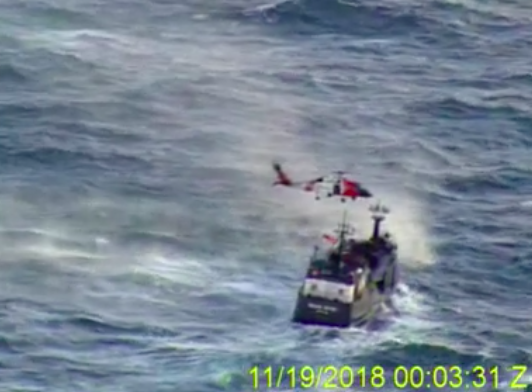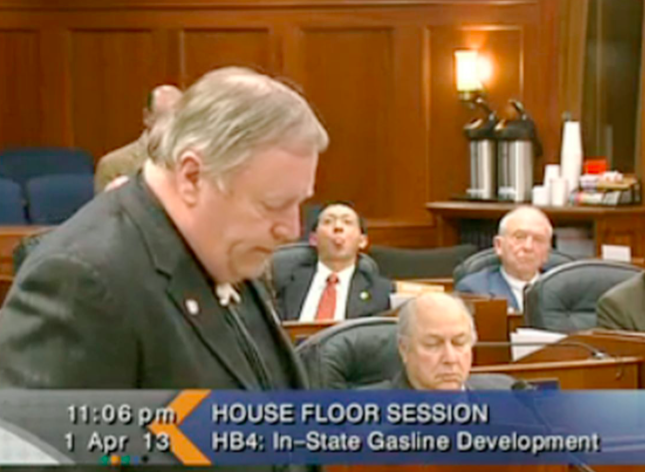IS GOLDEN HEART CITY TURNING BLUE?
With the Senate Seat A flipping to Democrat Scott Kawasaki, Alaska conservatives are asking if Fairbanks has gone the way of downtown Anchorage. Has it become a left-leaning northern haven that voted into the Senate a guy whose most notable act in the House of Representatives was sticking his tongue out at the House Speaker?
A review of history says no. Something has changed, however, in the past decade.
The military personnel in the area hold the key to who gets elected. That community has grown and will continue to grow.
With 5,108 soldiers currently stationed at Fort Wainwright, and 2,000 at Eielson Air Force Base, the military community — with its additional civilian workforce and family dependents — defines much about the Golden Heart City.

The area leans right in its heart, and patriotism runs deep. But the military community simply doesn’t turn out to vote except in a presidential election year.
The other definer of the city is the University of Alaska Fairbanks community. It tacks deeply the other way, toward Democrats and more government spending.
In 2014, Senate Seat A was changed during redistricting, and it was placed on a midterm election cycle, rather than a presidential election cycle. Without military voters, the district is on the bubble, as this election shows.
In 2012, Republican Pete Kelly beat Democrat Joe Paskvan for what was then Senate Seat B. Kelly won 54 to 45 percent of the vote.
After redistricting, Kelly had to run for the seat again in 2014, rather than the usual four year term. He won with 61 percent against a little-known Democrat.
Some 11,517 voters cast ballots in 2012, and only 8,926 in 2014 for the Senate seat. Why?
There was a presidential choice on the ballot in 2012.
Fast forward to 2018, when again only 8,120 people voted in the Senate Seat A race.
The military stayed home. But by now, Democrats had a candidate in Scott Kawasaki, who had served the more liberal-leaning half of the district in the House for more than a decade. Kawasaki’s tongue-gate rebuke was far in the past and he’d been sending out birthday cards to everyone in his district for years.
District 1, which trends toward university voters, would turn out for him, and District 2, where more military people live, could be counted on to stay home.
It was an expensive race, costing more than a half million dollars, between the candidates’ coffers and the independent groups that supported them. Still, a well-known Democrat is only winning the seat with 173 votes.
Kawasaki, not including union-fueled political action committees, raised and spent about $210,000 on his campaign. Kelly raised nearly $188,000, some $22,000 less than Kawasaki.
CAN DEMOCRATS HOLD THE SEAT?
Senate Seat A is a swing vote region. Fort Wainwright and Eielson Air Force Base voters cannot be persuaded to turn out. Even if Kelly had raised another $50,000, he might not have convinced soldiers and airmen to vote in enough numbers to turn the ballots his way.
This is where the next redistricting can have an impact, and why holding the Senate majority and the House majority is so critical for Republicans. The redistricting board will have the ability to put Senate Seat A on a cycle that matches the presidential election.
To get a sense of how the impact of the two military bases impact elections in Fairbanks, the last presidential election is the best marker. Here is how the individual precincts voted:
Aurora Precinct 1
- Hillary Clinton 295
- Donald Trump 434
Fairbanks No. 1
- Hillary Clinton 65
- Donald Trump 113
Fairbanks No. 2
- Hillary Clinton 120
- Donald Trump 157
Fairbanks No. 3
- Hillary Clinton 205
- Donald Trump 218
Fairbanks No. 4
- Hillary Clinton 86
- Donald Trump 149
Fairbanks No. 5
- Hillary Clinton 228
- Donald Trump 365
Fairbanks No. 6
- Hillary Clinton 119
- Donald Trump 182
Fairbanks No. 7
- Hillary Clinton 216
- Donald Trump 228
Fairbanks No. 10
- Hillary Clinton 58
- Donald Trump 119
THE BOTTOM LINE
For Senate Seat A to return to Republican control in 2022, they’ll need a well-known, well-regarded, and well-funded Fairbanks person to run in four years, and they’ll need to have that seat aligned with the presidential election cycle. Failing that, Republicans will need to motivate military personnel to come to the polls.











